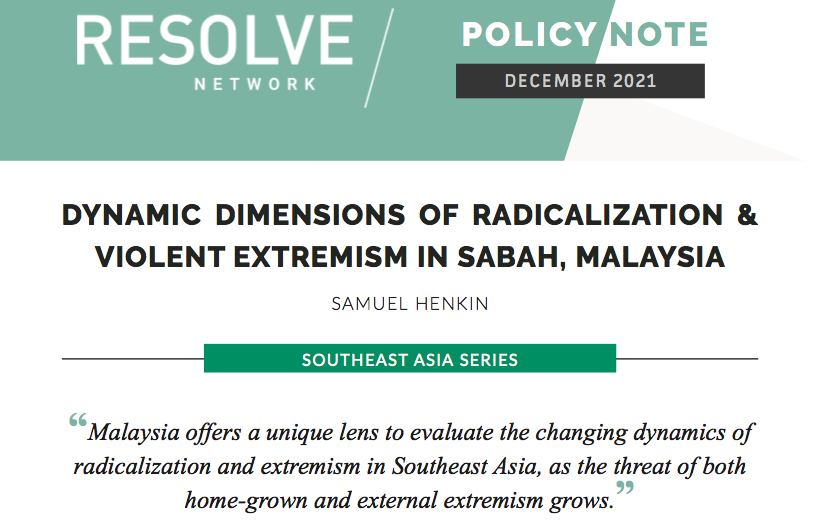Dynamic Dimensions of Radicalization and Violent Extremism in Sabah, Malaysia

Abstract
Malaysia offers a unique lens to evaluate the changing dynamics of radicalization and extremism in Southeast Asia, as the threat of both home-grown and external extremism grows. The country’s geographic location, bordering multiple active centers of violent extremism (the southern Philippines, southern Thailand, and Indonesia), makes it particularly vulnerable to further threats from violent extremism and terrorism, as regional and local violent extremist organizations (VEOs) exploit Malaysian geohistorical contexts and growing grievances related to social and political instability. Threats and risks of violent extremism are especially pronounced and manifest with severe consequences in the Malaysian state of Sabah.
This policy note advances a granular review of the dynamics underlying radicalization risk in Sabah, Malaysia, in order to extrapolate an analysis of emerging areas of threat and risk of violent extremism facing Southeast Asia. It offers an opportunity to better understand current and future threats and risks of violent extremism facing Southeast Asia and identifies important trends and recommendations for policymakers and practitioners in mitigating the spread of violent extremism and radicalization to violence in Sabah. The policy note also considers how building local preventing and countering violent extremism (P/CVE) capacity can mitigate Malaysia’s role as a staging area, transit hub, and conduit for the transportation of weapons, operatives, finances, and supporters to other regional and global terrorist organizations.
Suggested citation:
Henkin, Samuel. Dynamic Dimensions of Radicalization and Violent Extremism in Sabah, Malaysia. Washington, D.C.: RESOLVE Network, 2021. https://doi.org/10.37805/pn2021.25.sea.